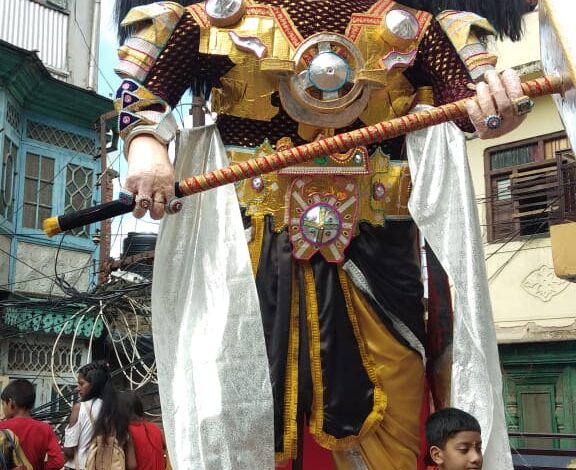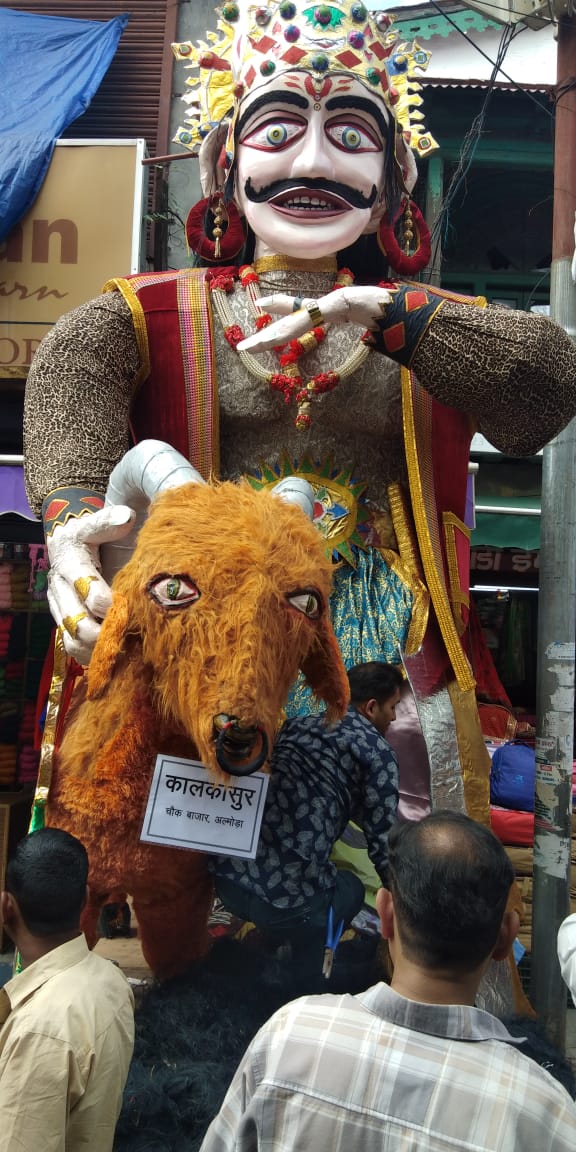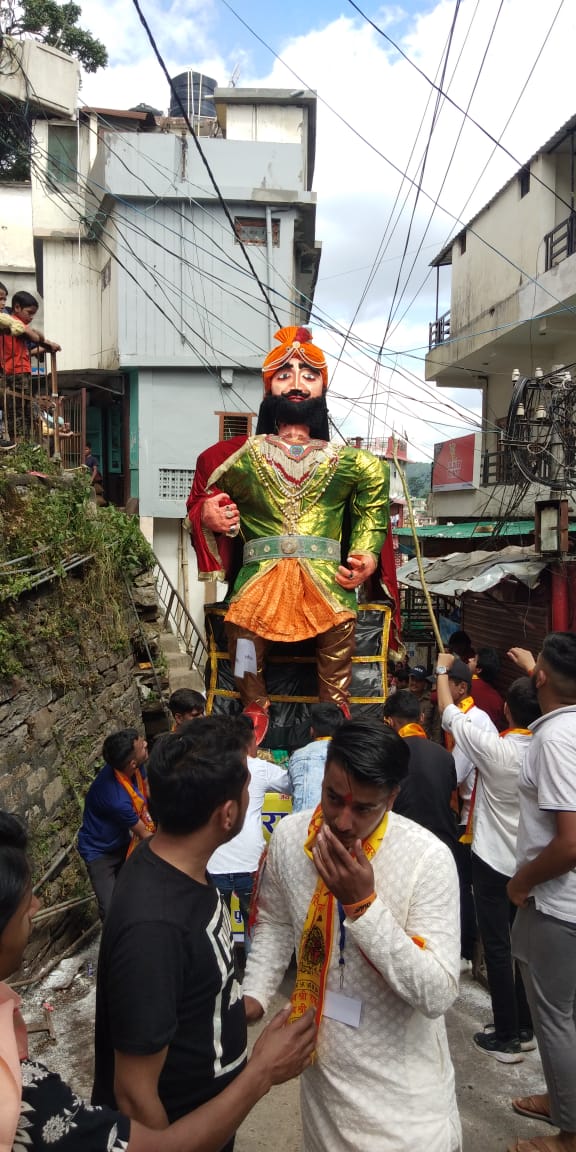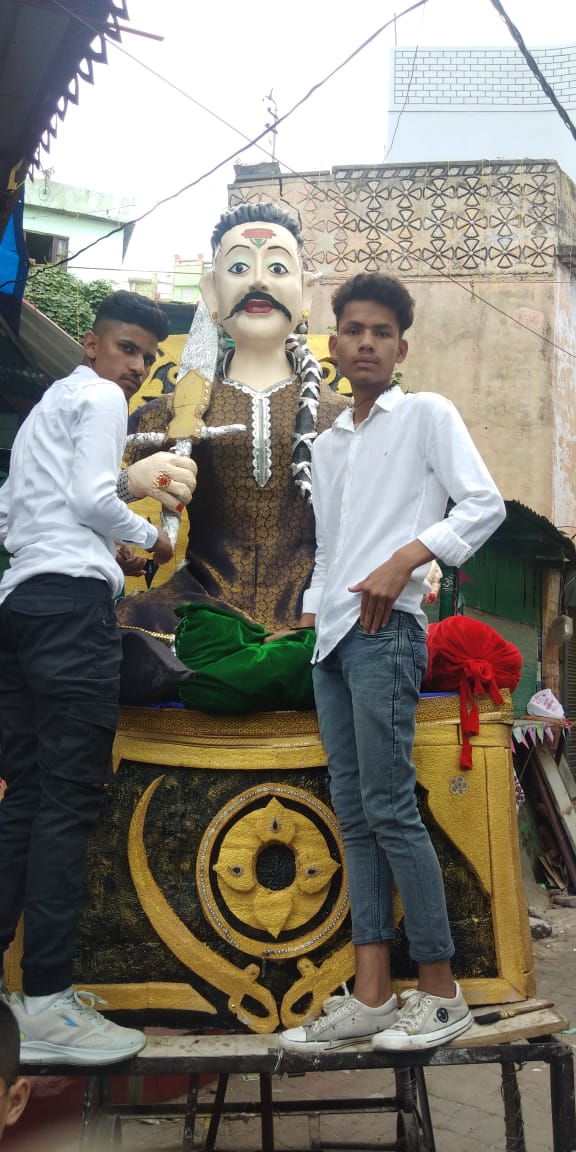Almora kept its’ tradition by burning 22 effigies during Dusshera festival

Almora kept its’ tradition by burning 22 effigies during Dusshera festival
B.D.Kasniyal
Pithoragarh, Oct 5
With the burning of effigy of Rawana along with Meghnath, Kumbhkarna and his other family members, the cultural capital of Almora kept its’ tradition of burning many effigies of the family members of demon king Rawana on the occasion of Dusshera festival today. This time 22 effigies of Rawna and his family members were consigned to flames to mark the victory of truth over evil. With the festival of Dusshera, the ten day long staging of epic ‘Ramlila’ also comes to an end in Almora, Nainital, Bhawali Ramnagar, Pithoragarh and other towns, cities and villages of Kumaon region of Uttarakhand.

“Keeping the tradition of making more and more effigies of Rawan’s family, we have this year made 22 effigies of Rawana family, that were made by different ‘mohallas’ of the town and were taken in a procession in the town to the venue where they were burnt ,”said Navin Bisht, a patron of ‘Ramlila’ committee at Nanda Devi in Almora.
According to Navin Bisht, the Ramlila is played over a dozen places in Almora town.
” The staging of Ramalila in Almora began in the year 1860 at Badreshawar and the initiator was the than Sadar Amin Devi Dutt Joshi,” said Bisht.

According to Chandrashekhar Tewari, the ‘Ramlila’ in Kumaon are based on ‘Ramcharit Manas’, written by Tulsidas in the 15th century.” The ‘Ramlilas’ in Kumaon region has struggled a lot to reach at this stage today and it’s organizers have kept it alive despite several handicaps in the last century.” said Tiwari.
“The staging of ‘Ramlila’, that began from Almora in the year 1860, reached Nainital, Bageshwar and Pithoragarh in the years 1880, 1885 and 1905 respectively,” said Tiwari.
“Though Pandit Uday Shankar, during his Almora stay, in the years 1940-1941,staged ‘Ramlila ‘through the means light and shadow, but his ‘Ramalila’ was different from traditional Kumaoni ‘Ramlila’ started by Devi Dutt Joshi, ” said Navin Bisht.

The organizers of Kumaoni Ramlila said that it is based on classical musical ‘Ragas’, that are sung by the actors using simple Kumaoni vocabulary.” The singing by the actors is given priority over acting during the staging of Kumaoni ‘Ramlila’,” said Chandrashekhar Tiwari.
According to Navin Bisht, the Kumaoni ‘Ramlilas’ are also influenced by Parsi theatre and Radhey Shayam Ramayan of Bareilly in music and staging is somewhat also influenced by methods that were prevalent in the ‘Braj’ region of Uttar Pradesh. “The great speciality of Kumaoni ‘Ramlila’ is that it is played by common actors, not by professional artists and it’s resources are managed by local devotees of Lord Rama,” said Bisht.





